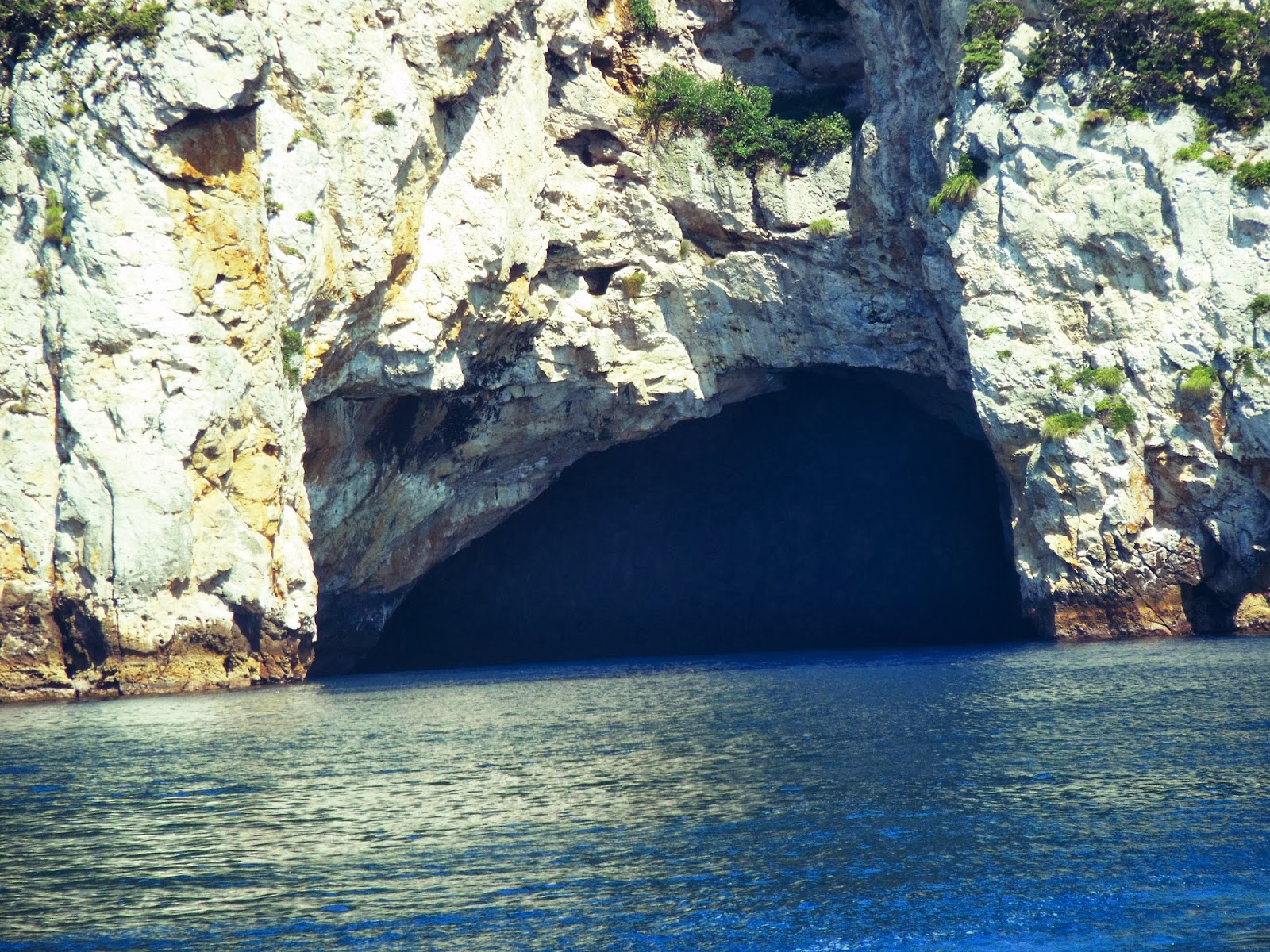Carol and Roger are now in an area known as Northland. This part of New Zealand was the first part of the country settled, originally by Maori and later by Europeans. It is loaded with history and is an area noted for islands, rocky coasts, and surfing beaches.
We hopped on a boat one morning and headed for Poor Knights Island, one of the most famous scuba destinations on the planet. The Poor Knight Island was designated a Marine Reserve (New Zealandish for an ocean national park) roughly 35 years ago. Jacque Cousteau spent so much time in this area, the arch in the photo at the right is called Cousteau’s North Arch.
Neither Carol nor Roger scuba dives, but we were willing to try our hands at snorkeling. Despite being 22 kilometers off shore, the water was clear as glass…and that smooth as well.
Each time Roger saw a different fish, he swam back to the boat and looked it up in a photo catalogue of New Zealand fish. Our camera couldn’t take photos underwater, so we snagged internet pictures of the fish he saw.
 |
| Red Moki |
 |
| Sandagers Wrasse |
 |
| Sea Perch |
 |
| Snapper |
 |
| Black Angelfish |
 |
| Spotted Sawtail |
After a while Carol gave up on snorkeling and took to sea kayaking. She was having so much fun checking out the fish, coral and kelp from the kayak, the boat crew had a hard time reeling her in.
- - - - - - - - - - - - - - - - - - - - - - - - - - - - - -
Poor Knights Island also contains the world’s largest sea cave.
The inside of the cave is covered with moss and lichens…like you would normally find on land. The stripe above the water-line is the high water mark, a demarkation line separating marine growth from land.
The most remarkable growth were the ferns growing on the ceiling. They think the light reflected off the water is the sky and so grow downward towards it.
As we headed back to port in Tutukaka, we passed a nesting rookery for Buller Shearwaters…a bird that breeds exclusively on Poor Knights Island. These birds migrate back and forth thousands of miles to the North Pacific…some as far away as Alaska.
Carol snagged this picture of the nesting area with 12 chicks just starting to get their legs. The chicks will take off from their rocky nests and either fly or fall into the water and crash against the rocks. Better get it right the first time!
All in all, it was an exceptional day!












Big smiles all around! Loved the fish and bird images....
ReplyDelete